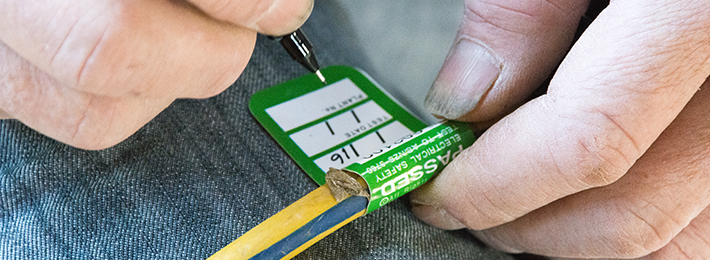Performing prescribed electrical work
07 May 2017, Featured, LBP & Regulation, Prove Your Know How

Like restricted building work (RBW), prescribed electrical work (PEW) is governed by strict licensing regulations – here’s what you and your customers need to know
In recent years, both LBPs and non-LBPs have been known to undertake prescribed electrical work. It’s important to note that this is illegal
– only licensed electrical workers are permitted to carry out prescribed electrical work.
The one exception to this rule is that owner-occupiers of residential premises may carry out some types of electrical work without a licence.
What can homeowners do?
Work that can be done by the owner of the premises is listed in Regulation 57 of the Electricity (Safety) Regulations 2010 and includes:
- Removing and replacing fuse links.
- Connecting and disconnecting permanently wired appliances.
- Moving switches, sockets and lighting outlets if they are wired
with tough, plastic-sheathed cables. - Replacing switches, socket outlets, light fittings, ceiling roses, water heater switches, thermostats and elements.
Before a homeowner does any work themselves, however, they need to familiarise themselves with the Electrical Code of Practice 51 (external link).
Other than these exempt tasks, having electrical work undertaken by unlicensed tradespeople is not only unsafe, but illegal and you could be fined (if convicted) up to $10,000 if you:
- Do prescribed electrical work while not licensed to do so.
- Cause, intend to cause or may reasonably cause any other person to believe that you are licensed to do PEW.
- Hold yourself or your company out as being licensed to do PEW.
What can you do on the building site?
If you need to use an electrical worker, you should check that they are licensed. You can check the public register for electrical workers or ask to see the electrical worker’s licence card before work begins. Having a current practising licence means that the electrical worker is up to date on current safety procedures and has access to electrical standards.
When work is finished, ask for a Certificate of Compliance and Electrical Safety Certificate. Electrical workers are required by law to certify particular work. The certification is a public assurance that the work has been carried out by an authorised person and that it complies with the safety requirements.
You can find out if an electrical worker is registered or licensed on the Electrical Workers Registration Board website.
Register to earn LBP Points Sign in
5 Comments
Leave a Reply
You must be logged in to post a comment.




Good quiz
Good Quiz
Good Quiz
didn’t KNOW THAT
good to know